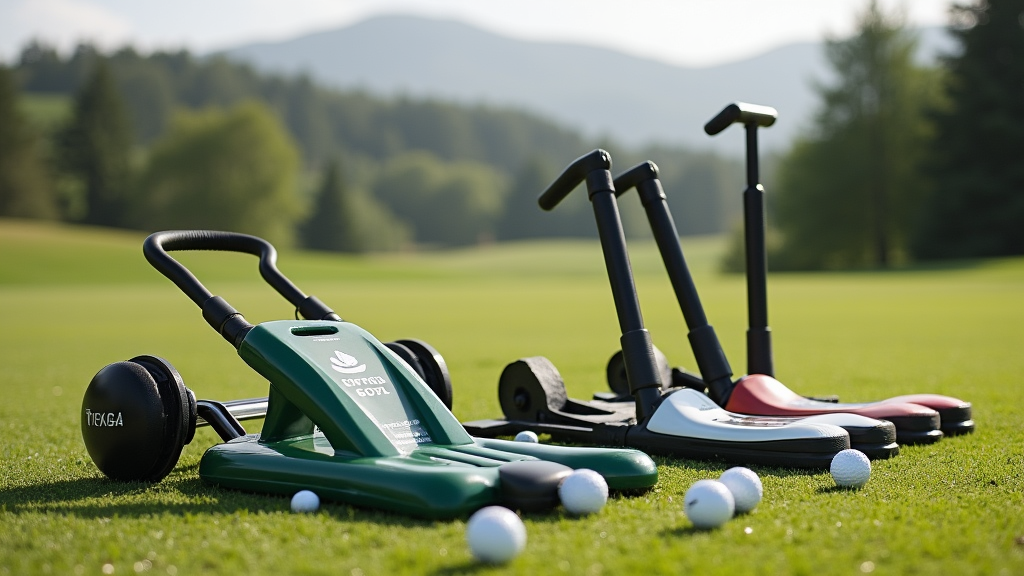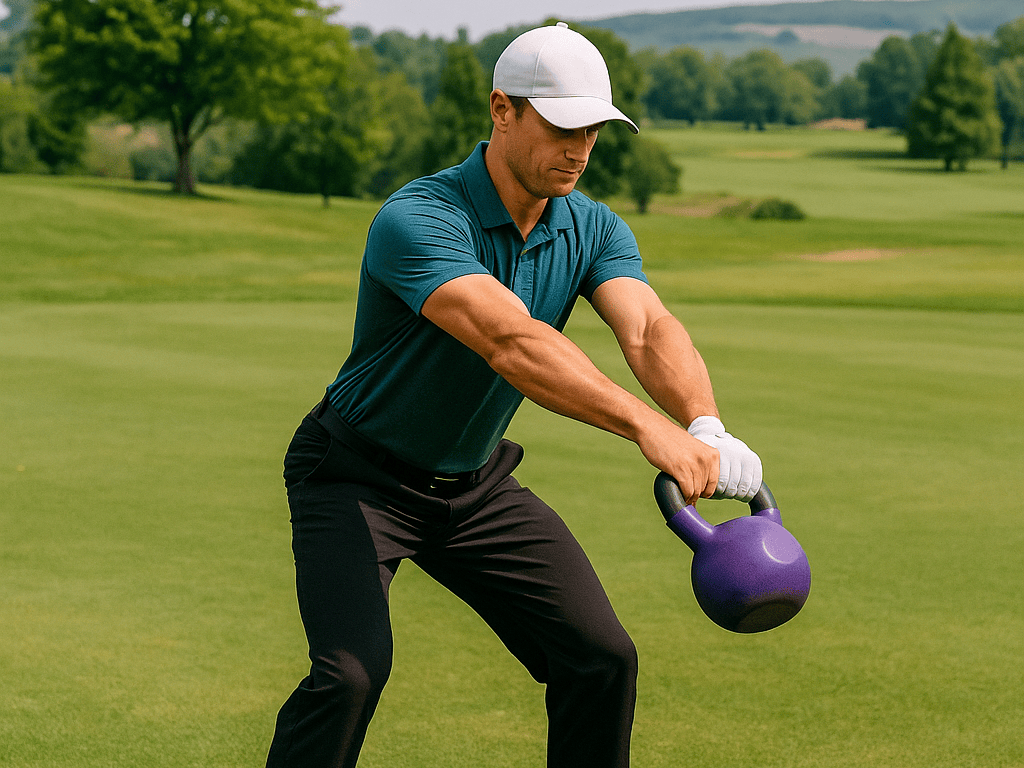If you’re looking to level up your golf game, you’ve probably stumbled upon loads of fitness tips, wild claims, and promises of “instant improvement” online. Golf fitness is talked about more today than ever, but there’s plenty of advice that comes bundled with myths that actually hold you back. Here, I’m breaking down some of the biggest golf fitness myths, sorting fact from fiction, and sharing what really works to keep you on top of your game.

Golf Fitness Myths That Won’t Help Your Swing
The connection between fitness and golf performance is pretty obvious if you watch any PGA Tour event. Players today are stronger, more mobile, and far more athletic than decades ago. Still, some old-school thinking lingers, and a bunch of myths continue to float around country clubs and gym locker rooms. Here are some I hear all the time.
- Myth 1: Heavy Weightlifting Will Mess Up Your Golf Swing
- If you’ve ever been told that lifting weights is going to ruin your touch or mess up your timing, you’re not alone. But modern training shows that strength work—if done right—helps you keep better posture, swing faster, and lower your risk of overuse injuries. You don’t have to lift like a powerlifter, but full body strength work, stability, and mobility drills belong in any serious golfer’s routine.
- Myth 2: Flexibility Is All You Need
- Stretching brings benefits, but there’s a difference between being flexible and having true, golf-specific mobility. Golfers need stability and control of their range of motion, not just the ability to touch their toes. Spend time on mobility exercises, such as dynamic stretching, controlled lunges, and spinal rotations; this route is much more effective than just stretching for flexibility.
- Myth 3: Cardio Isn’t Important for Golfers
- Golf may not seem like the sweatiest sport, but if you’re playing 18 holes you’re covering anywhere from 4–7 miles. Cardio keeps your energy up, helps recovery, and can improve your focus—especially on the back nine.
Understanding the 3 P’s in Golf
I often get asked about the “3 P’s” in golf. The term comes up frequently, and depending on the coach, the words may slightly differ, but usually it boils down to: Posture, Position, and Power.
- Posture: Strong, athletic posture is critical. Good posture grants consistent balance and allows better rotation during your swing.
- Position: This addresses your setup and alignment—where your hands, body, and club are at each stage of the swing.
- Power: Not just swinging wildly, but building speed efficiently from the ground up. Mobility, strength, and timing all feed into real power.
By putting in work on all three, you’re laying the foundation for a swing that is more efficient and repeatable. I like to structure drills and workouts to target each “P” throughout the week, focusing on quality over quantity.
Quick Guide to Golf Fitness That Actually Helps
Jumping into a golf fitness program doesn’t demand a fancy gym or a closet full of gadgets. Here’s how I usually set up things for real, steady improvement:
- Mobility First: Begin with dynamic warmups and controlled drills that take your joints through their range of motion. Shoulder circles, hip openers, and trunk rotations set you up for success.
- Build Strength—The Golf Way: Zero in on compound moves, such as squats, lunges, pushups, and rows. Stability work with a Swiss ball or resistance bands also sharpens core and balance.

- Train for Power: Medicine ball slams, kettlebell swings, or jump squats add that burst of explosive movement which translates to real clubhead speed gains.
- Cardio Counts: Add brisk walking, cycling, or interval training sessions a couple of times per week to increase your golf stamina.
With even a few days a week, focusing on these fundamentals starts to pay off. Short, focused sessions are often more effective and easier to maintain than marathon workouts.
Common Myths Around Golf Training Busted
- Myth 4: Golfing Alone Will Get You Fit
- Playing more golf does sound like it should make you fit for golf, but the reality is golf is mostly skill-based. Swinging a club, walking the course, and hours on the practice green don’t take care of strength, stability, or mobility gaps.
- Myth 5: Only Pros Need Golf Fitness
- You don’t have to play on the pro tour to benefit from fitness. Weekend players commonly suffer back pain, stiffness, and fatigue—mainly from muscle imbalances and mobility limits. Some simple stretches, balance drills, and strength work can change the way you move and feel after a round.
Is Golfing 18 Holes a Workout?
Walking 18 holes can certainly feel like a workout. Most courses run several miles, and if you’re carrying your bag or pushing a trolley, you’ll engage plenty of muscle groups. Still, it isn’t quite the same as a full workout—especially for real strength or flexibility gains. Treat walking the course as “active recovery” and add specific strength and stability work for full golf fitness.
Can Golf Build Muscle?
It’s rare to see anyone add major muscle just by swinging clubs. Your forearms, shoulders, and core get some work, but not enough resistance or intensity for visible muscle growth. Strength training using weights or bodyweight exercises is the way to go if you want muscle while improving your swing.
Is Benching Good for Golf?
The bench press enjoys a reputation for building upper body muscle. But for golf, it’s more useful to train push and pull moves that mimic the golf swing’s movement patterns. If you like to bench, mix in pushups, cable presses, and antirotation core exercises for greater benefit. The bench press can be part of a balanced routine, but shouldn’t be your main event.
Challenges Golfers Face When Stepping Into Fitness
Starting a new fitness routine as a golfer brings a few unique obstacles. Here are some common hurdles and ways to take them on:
- Motivation: It’s easy to skip workouts when you’d rather be hitting balls. Set small, achievable goals—doing mobility drills between rounds or getting in the gym just twice a week can spark new habits.
- Time Crunch: Most people don’t have hours to spare. Fast, focused workouts (20–30 minutes) are easier to stick to and still bring results.
- Lack of Knowledge: Not sure where to start? Stick with basics. There are loads of free, beginner-friendly routines online crafted especially for golfers.
Mobility and Recovery
Plenty of players overlook recovery routines. Golf puts stress on your lower back, hips, and shoulders. Regular stretching, foam rolling, and yoga sessions help your body come back quicker and keep you loose for the next round. As you build your new routine, don’t skimp on sleep and hydration; both are crucial for muscle repair and long-term performance.
Handy Golf Fitness Routine for Everyday Players
- Dynamic Warm-Up: 5-7 minutes
- Strength Circuit: Squats, lunges, rows, pushups (2–3 sets of 8–12 reps each)
- Golf Specific Mobility: Spinal rotations, hip mobility drills
- Core Work: Planks, birddogs, dead bugs
- Finish with Light Cardio: Walk, jog, or bike
Try swapping exercises to keep things interesting. Consistency is king; it’s better to show up two or three times each week than chase trendy “magic” moves for quick fixes. The slow-and-steady approach leads to real gains.
Frequently Asked Questions
These are a few common questions I get from both beginners and veteran golfers.
What are the 3 P’s in golf?
Answer: The 3 P’s stand for Posture (your setup and movement patterns), Position (your club and body throughout the swing), and Power (how you deliver speed and distance). Zero in on all three for a more reliable, efficient swing.
Can golf build muscle?
Answer: Playing golf usually isn’t enough for muscle growth; you’ll want to add strength exercises—weights, resistance bands, or bodyweight moves—to see changes.
Is golfing 18 holes a workout?
Answer: Yes, particularly if you walk, carry your bag, or play hilly courses. An 18-hole round burns calories and works a number of muscle groups, but adding structured workouts maximizes benefit.
Is benching good for golf?
Answer: The bench press is fine for upper body strength, but exercises like pushups, cable presses, and stability drills offer more direct benefits for your golf swing. Mixing things up keeps your body balanced and your swing in tune.
Real-World Golf Fitness: What Works and What Doesn’t
I’ve watched golfers make strong progress by teaming smart training with focused on-course practice. The best success comes from programs blending mobility, strength, and cardio, all while ignoring quick-fix fads. By letting go of all-or-nothing thinking, you make fitness feel like a natural piece of enjoying golf—not just another task.
Find a straightforward plan, stick with it, and listen to how your body feels before and after each round. That is how you build a truly “golf ready” body—one that works well on and off the course and keeps you playing your best for years down the road.
